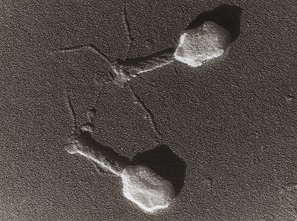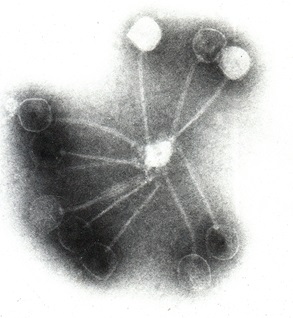This week, the Dutch magazine Sciencelink ran an article written by Marysa van den Berg on an important new development in disease control. The use of bacteriophages, viruses that kill bacteria. A solution for the problem that an increasing number of bacterial families develop resistance to antibiotics.

Development of bacteriophages
Obulytix, a spin-off of UGent en KU Leuven, develops this new pathway. As they write on their website: ‘the world is facing an unprecedented antimicrobial resistance crisis with regular antibiotics losing their efficacy against antibiotic-resistant bacteria.’ And Yves Briers, CEO and co-founder of Obulytix says: ‘The antibiotics resistance crisis grows worse and worse.’ Already, there are bacterial strains that are resistant to every known antibiotic.
The solution, according to Obulytix: the use of bacteriophages. These produce lysines, compounds with unique properties like cutting up bacterial cell walls. As they write on their website: ‘Their innovative mode of action sets them apart as a revolutionary class of antibiotics, offering unique advantages such as specificity, absence of resistance development, and the capability to combat chronic infections, marking a profound shift in antibiotic innovation.’
A new mechanism
The mode of action of these lysines from bacteriophages is quite different from that of the usual antibiotics, explains Briers to Sciencelink. ‘The classical antibacterial compounds consist of small molecules that restrict the bacterial metabolism, and as a result of that the bacterium will ultimately die. Our molecules are enzymes that cut through the bacterial cell wall like molecular scissors, after which it will explode like a balloon that cracks.’ That is an efficient and very speedy mechanism. The phagal lysines cut fast, up to 1000 times per second. They just need to cut a few times and the cell will burst.

Perhaps more importantly even, these lysines specifically take the pathogenic organism as their target. They leave untouched the multitude of useful bacteria in the body. As a result, the body doesn’t develop resistance towards them. Each successful phagal lysine is a unique combination of natural building blocks. Of which there exist a lot in nature. Because of Obulytix’s specific knowledge, phages can be made on demand as it were. Each with a specific application. A successful lysine consists of a number of such ‘blocks’. One block will recognize and grasp the cell wall of a specific bacterium, another will cut and still another will boost the efficiency of the attack. For each bacterium a specific lysine, a unique combination of building blocks.
A solution to the problem of resistance
A long preparatory period preceded this development of bacteriophages – about twenty years. Production technology development was very important. At first, Briers and colleagues would have to produce the phagal lysines one by one. But over the years, a complete ‘inventory’ was created, containing DNA fragments that code for a number of phagal lysine building blocks. And after that, researchers used artificial intelligence. Through those tools, industry discovered the potential of their methods and products. Allowing them to draft their business plan.
Last December, Obulytix received investments from Venture Fund, Qbic and Gemma Frisius Fund, to a total of €4 million. Their goal is to develop real applications by the end of this year. ‘With our phagal lysines, we can produce an optimal antibiotic against each possible infection,’ says Briers. Their first object is infections of the lung and the blood by resistant Gram-negative bacteria. Often, hospitalized and weakened patients fall victim to them. The ultimate goal is to actually provide a solution to the problem of resistance. ‘It is high time to take this development to the industry,’ says Briers. ‘We believe that these enzymes are the ultimate antibacterial medication of the future. That would be a dream come true.’
Interesting? Then also read:
Chemistry vs. bacteria, # 56. Bacteriophages, almost forgotten, but….
Chemistry vs. antibiotics, # 57. Phage therapy, a promising alternative to antibiotics?
Antibiotics resistance, and how to overcome it
